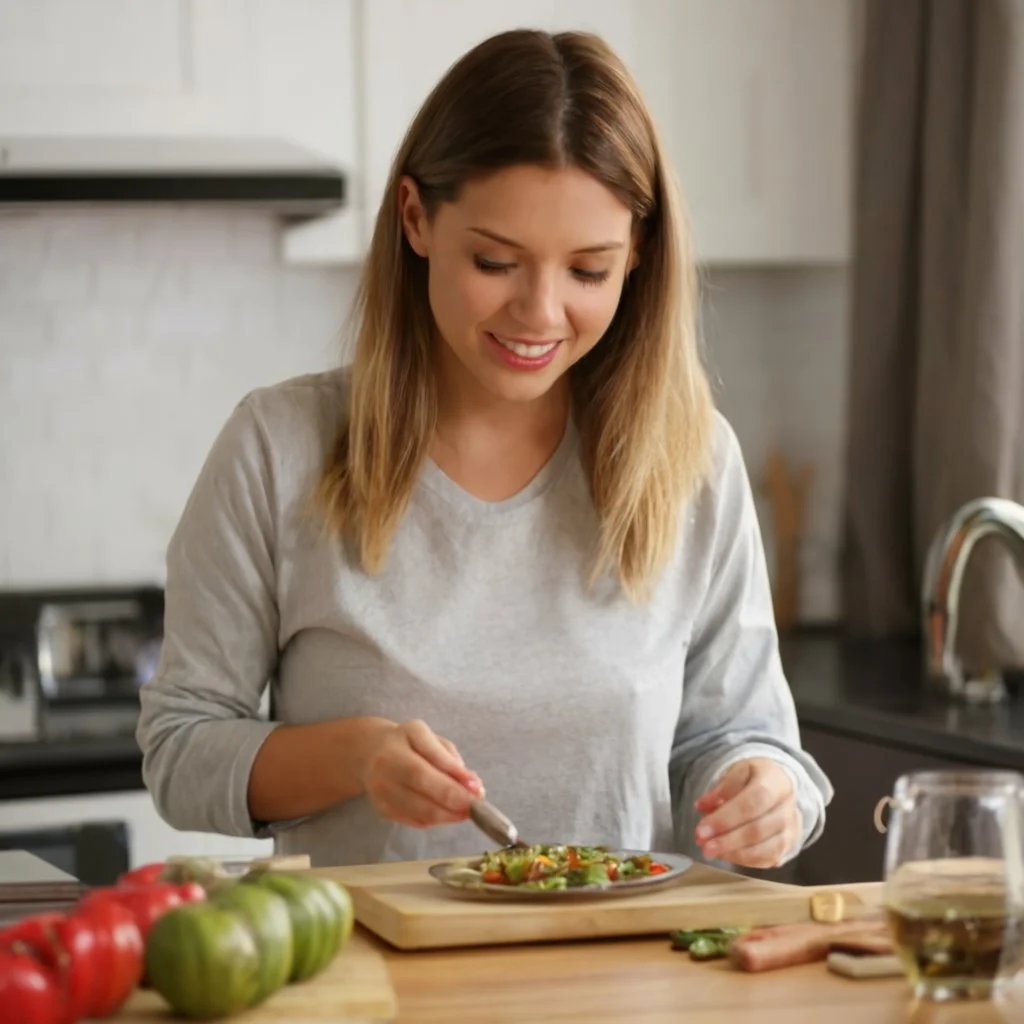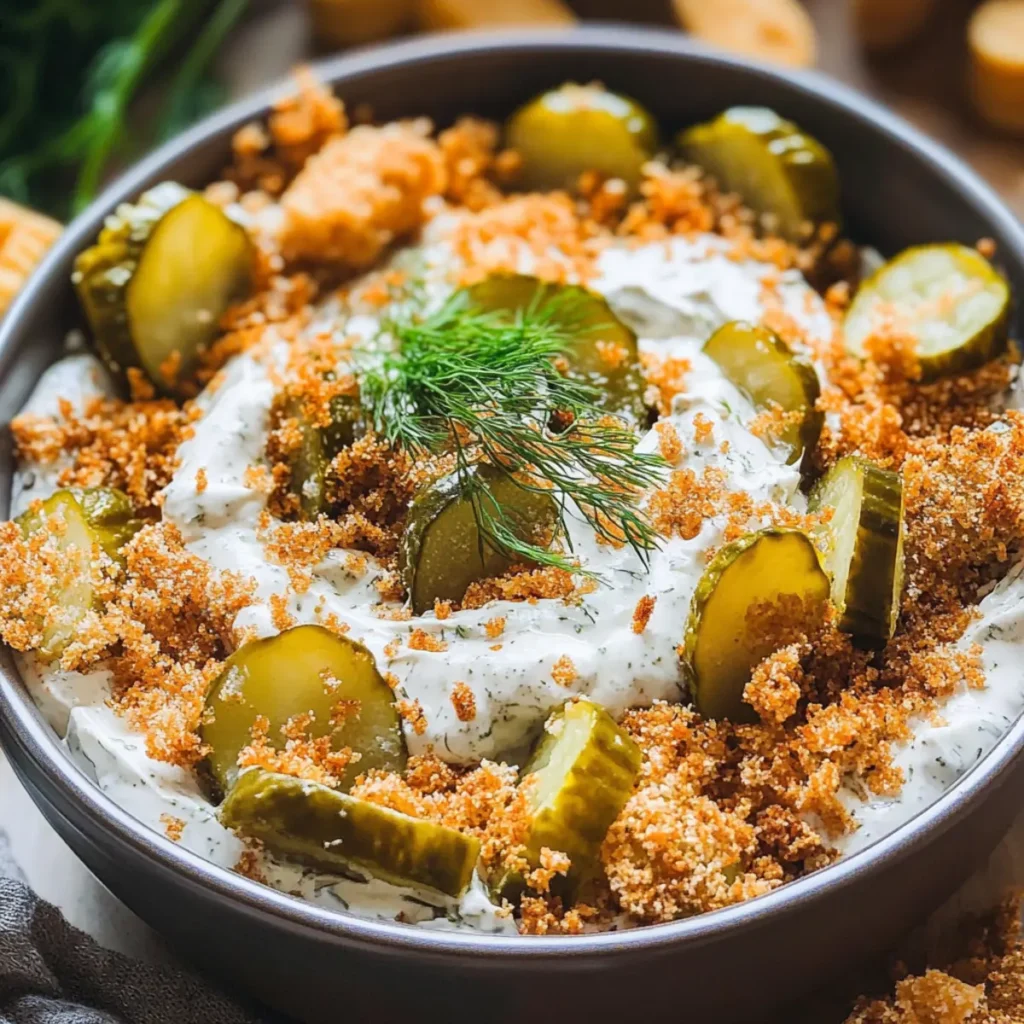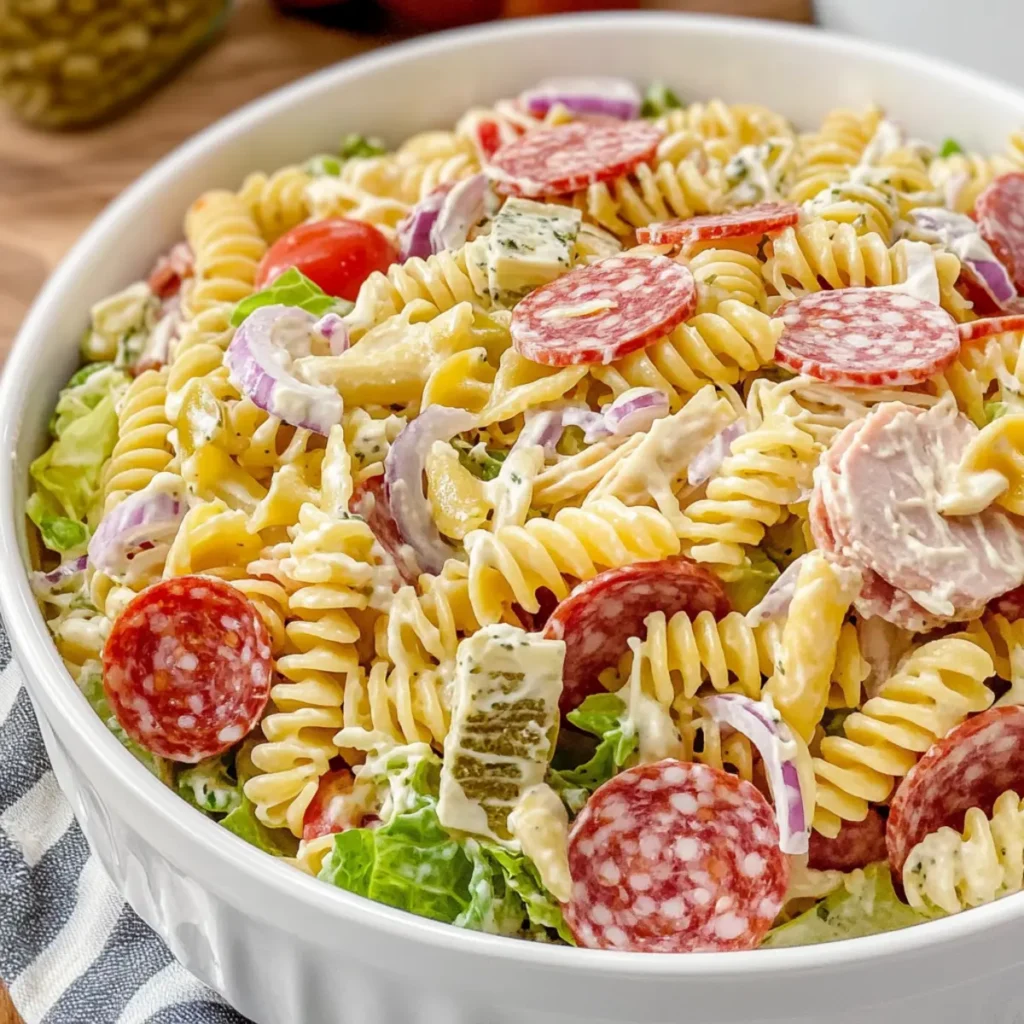Introduction to Pastina Recipe: A Comfort Food Classic
The pastina recipe, a cornerstone of Italian comfort food, has long been cherished in culinary traditions around the world. This simple yet delightful dish, centered around tiny star-shaped pasta, offers a heartwarming and nourishing experience that appeals to all ages. Consequently, its versatility and ease of preparation have made the pastina recipe a beloved staple, embodying the essence of homely, comforting cooking. For more insights into its cultural significance and variations, you can explore this detailed article on Italian pasta dishes.
The Origins of Pastina Recipe
Pastina, often hailed as the ultimate comfort food, boasts a rich history rooted in Italian cuisine. This tiny pasta has been warming hearts and homes for generations, offering a simple yet satisfying meal option. Consequently, its versatility and ease of preparation have made it a staple in kitchens worldwide, transcending cultural and culinary boundaries. To understand more about its Italian roots, you can explore this comprehensive guide on Italian pasta varieties.
Why Pastina Recipe is Loved Across Generations
The love for pastina cuts across ages for several reasons. Its gentle texture makes it an ideal first solid food for babies, while adults cherish it for its nostalgic value and comforting qualities. Moreover, Pastina’s ability to blend seamlessly with various ingredients also contributes to its enduring popularity.
Unveiling the Traditional Pastina Recipe
The Italian pastina recipe is a simple yet delightful dish, frequently served to children and equally enjoyed by adults. Moreover, it’s a versatile recipe that can be adapted to various tastes and preferences. Here’s a traditional pastina recipe:
Ingredients:
- 1 cup of pastina pasta (tiny star-shaped pasta)
- 2 cups of water or chicken broth (for more flavor)
- 1 tablespoon of unsalted butter
- 2 tablespoons of grated Parmesan cheese
- Salt, to taste
- Optional: a pinch of nutmeg or black pepper, and a small amount of cooked vegetables or shredded chicken for added nutrition
Instructions for Pastina Recipe:
- Boil the Liquid:
- In a medium saucepan, bring the water or chicken broth to a boil. If you’re using water, add a pinch of salt.
- Cook the Pastina:
- Add the pastina pasta to the boiling liquid, and then stir occasionally to prevent sticking.
- Cook according to the package instructions, typically for about 5 minutes, until the pasta is tender and has absorbed most of the liquid.
- Add Butter and Cheese:
- Remove the saucepan from heat. Next, stir in the butter until it melts and is evenly distributed.
- After removing the saucepan from heat, add the grated Parmesan cheese and stir until the pasta becomes creamy and the cheese is fully melted. If you’re opting to use nutmeg or black pepper, this is the perfect time to add it.
- Optional Additions:
- If desired, you can enhance the dish by adding cooked vegetables, such as peas or carrots, or shredded chicken to the pastina for extra flavor and nutrition.
- Serve Warm:
- Taste and adjust the seasoning if necessary. Serve the pastina warm, ideally in a cozy bowl.
Tips for Pastina Recipe:
- For Babies and Toddlers: Pastina is often one of the first solid foods given to babies. Therefore, for very young children, it’s important to ensure the texture is suitable and to avoid adding salt.
- Broth vs. Water: Using chicken or vegetable broth in your pastina recipe enhances the flavor, offering a richer taste. However, if you prefer a lighter version, water is a perfectly good substitute and works well too.
- Cheese Variations: While Parmesan cheese is the traditional choice for pastina, don’t hesitate to experiment with other types of cheese. Pecorino Romano can add a sharper flavor, or you might try a mild cheddar for a different, yet equally delicious, taste experience.
Enjoy this comforting bowl of pastina, perfect for a quick meal or a soothing dish on a chilly day!
Variations of Pastina Recipes
Pastina, the tiny pasta shapes beloved in Italian comfort food, offers a variety of delicious recipes. From hearty soups to cheesy baked pasta and pasta salads, Pastina Recipe like Ditalini and Orzo have evolved from simple soup ingredients to stars of numerous tasty Italian dishes. You can enjoy Pastina Recipe in simple dishes like a bowl of buttery pastina topped with Parmesan cheese or in more elaborate recipes such as a Greek-inspired pasta salad. This versatility makes pastina a fantastic ingredient for a range of culinary creations.
Nutritional Benefits of Pastina
Pastina, a simple yet comforting soup made with tiny pasta, chicken broth, olive oil, and garlic, offers more than just comfort. It provides several nutritional benefits as well. The warm broth in pastina is particularly soothing for the throat and aids in hydration, making it an ideal choice, especially during times of illness.
Garlic, a common key ingredient in many pastina recipes, boasts antimicrobial and anti-inflammatory properties. While no evidence suggests garlic’s effectiveness against COVID-19, many believe it strengthens general health and immunity. This proves particularly beneficial in combating common ailments like colds or the flu.
In terms of nutritional content, pastina typically includes:
- Fiber: Pastina can contribute to daily fiber intake, which is essential for digestive health.
- Calories: A serving of pastina can have a moderate calorie count, making it a suitable option for a light meal or a comforting dish during illness.
- Protein: Pastina contains a small amount of protein, which is vital for body repair and maintenance.
It’s important to note that the nutritional value of pastina can vary depending on the specific recipe and ingredients used. For instance, adding vegetables or lean protein to pastina can enhance its nutritional profile. Additionally, the method of preparing and using garlic in pastina can affect both the dish’s flavor and health benefits.
Cooking Tips for Perfect Pastina Recipe
Cooking pastina, a tiny, star-shaped pasta, is relatively straightforward, but there are some tips and tricks to ensure you get a perfect result every time. Here’s a guide to cooking pastina to perfection:
1. Choosing the Right Pot:
- Use a medium-sized saucepan; this larger pot size ensures even cooking and effectively prevents the
2. Water-to-Pasta Ratio:
- Generally, use about 2 cups of water or broth for every 1 cup of pastina. This ratio allows the pasta to cook evenly and absorb the liquid well.
3. Boiling the Liquid:
- Bring the water or broth to a full boil before adding the pastina. This helps cook the pasta evenly and quickly.
4. Stirring:
- Stir the pastina occasionally while it cooks. This prevents it from sticking to the bottom of the pot and ensures even cooking.
5. Cooking Time:
- Check the package for the recommended cooking time. Pastina usually cooks within 5 minutes. It should be tender but not mushy.
6. Testing for Doneness:
- Taste a piece of pastina to check if it’s cooked to your liking. It should be soft and easy to chew.
7. Draining (If Necessary):
- If excess water remains after cooking the pastina, you can drain it, although traditionally, you cook pastina until it absorbs all the liquid.
8. Adding Fat:
- Stir in a bit of butter or olive oil after cooking. This adds flavor and prevents the pastina from sticking together.
9. Incorporating Cheese:
- Add grated Parmesan or your cheese of choice while the pastina is still hot. This allows the cheese to melt and mix in evenly.
10. Seasoning:
- Season with salt and pepper to taste. However, be cautious with the amount of salt if you’re using a salted broth.
11. Serving Immediately:
- Serve pastina warm, immediately after cooking for the best experience.
- If it sits too long, it can become sticky and clump together.
12. For Babies and Young Children:
- Cook the pastina until it reaches a very soft texture. Avoid adding salt and strong spices for very young children.
13. Adding Extras:
- For a more nutritious meal, add cooked vegetables, shredded chicken, or a beaten egg (stirred in at the end of cooking for a creamy texture).
14. Storing Leftovers:
- If you have leftovers, store them in an airtight container in the refrigerator. Reheat with a splash of water or broth to restore moisture.
Consequently, by following these tips, you’ll be able to cook pastina that’s delicious, comforting, and perfect in texture every time. Enjoy your meal!
Pairing Pastina Recipe with Other Dishes
Pairing pastina with other dishes can lead to a comforting and satisfying meal. Specifically, given its delicate size and texture, pastina serves well as a side dish or as a foundation for various ingredients. Here are some suggestions for combining pastina with other dishes:
1. Soups and Broths:
- Chicken Soup: Add cooked pastina to homemade chicken soup for extra heartiness.
- Vegetable Broth: Stir pastina into a light vegetable broth for a simple, soothing meal.
- Minestrone: Incorporate pastina in minestrone or other hearty vegetable soups for added texture.
2. Proteins:
- Grilled Chicken or Fish: Serve pastina as a side dish with grilled chicken or fish. The mild flavor of pastina complements the protein without overpowering it.
- Meatballs: Pair pastina with Italian meatballs and marinara sauce for a twist on the traditional spaghetti and meatballs.
- Eggs: Mix pastina with scrambled eggs for a filling breakfast or brunch dish.
3. Vegetables:
- Steamed or Roasted Vegetables: Combine pastina with a mix of steamed or roasted vegetables like carrots, zucchini, and bell peppers for a healthy and colorful meal.
- Sauteed Greens: Toss pastina with sautéed spinach, kale, or Swiss chard, and a bit of garlic for a nutritious side dish.
4. Cheese:
- Cheesy Pastina: Make a simple cheesy pastina dish by adding a variety of cheeses like mozzarella, cheddar, or gouda.
- Caprese Salad: Serve pastina alongside a fresh Caprese salad (tomato, mozzarella, basil) for a light and refreshing meal.
5. Casseroles:
- Baked Pastina Casserole: Use pastina as the base for a casserole, mixed with cheese, vegetables, and a protein like chicken or sausage, then baked until golden.
6. Italian Classics:
- Pesto: Toss Pastina Recipe with homemade pesto for a flavorful dish.
- Carbonara: Combine pastina with the classic ingredients of carbonara – eggs, Parmesan cheese, pancetta, and black pepper.
7. Salads:
- Pasta Salad: Use pastina in a cold pasta salad with diced vegetables, olives, and a vinaigrette dressing.
- Tuna Salad: Mix pastina with tuna, mayonnaise, and fresh herbs for a quick and easy lunch.
8. International Flavors:
- Stir-Fry: Add pastina to a vegetable stir-fry for an unconventional but satisfying twist.
- Curries: Serve mild curries over pastina instead of rice for a unique fusion of Italian and Asian or Indian flavors.
9. Desserts:
- Sweet Pastina Pudding: Cook pastina in milk, sweeten with sugar, and add cinnamon or vanilla for a simple dessert.
When pairing pastina recipe with other dishes, remember that its mild flavor and small size make it a versatile ingredient that can complement a wide range of flavors and textures. Experiment with different combinations to find your favorite way to enjoy this classic Italian pasta!
Pastina for Special Diets
Pastina, traditionally made from wheat, may not fit all dietary requirements, particularly for those needing gluten-free or low-carb options. However, there are methods to modify pastina dishes to accommodate a variety of dietary needs.
Here’s how you can modify pastina for special diets:
1. Gluten-Free Diet:
- Gluten-Free Pastina: Look for pastina made from gluten-free grains like rice, corn, or quinoa. These are available in health food stores or specialty sections of supermarkets.
- Cooking Tips: Gluten-free pastina can have a different texture and cooking time. Follow the package instructions carefully to avoid overcooking.
2. Low-Carb/Keto Diet:
- Vegetable-Based Alternatives: Substitute pastina with finely chopped cauliflower or broccoli rice for a low-carb version. You can lightly steam these to replicate the texture of pastina.
- Shirataki Noodles: Shirataki noodles, made from konjac yam, are notably low in carbohydrates. They come in various shapes, including rice-like forms that can substitute for pastina.
3. Vegan Diet:
- Vegan Pastina: Ensure the pastina is egg-free, as some brands may include eggs. Most basic pastina is vegan, being made from semolina and water.
- Vegan Add-Ins: Replace butter and cheese with vegan alternatives like plant-based butter and nutritional yeast or vegan cheese.
4. Vegetarian Diet:
- Cheese and Butter: If you’re lacto-vegetarian, you can enjoy pastina in its traditional form with butter and cheese.
- Vegetable Broth: Cook the pastina in vegetable broth for added flavor.
5. Dairy-Free Diet:
- Non-Dairy Alternatives: Use olive oil or dairy-free butter alternatives instead of regular butter. Opt for dairy-free cheese or omit cheese altogether.
- Broth Options: Use chicken or vegetable broth that doesn’t contain dairy.
6. Low-Sodium Diet:
- Control Salt in Cooking: Cook pastina in unsalted water or low-sodium broth.
- Cheese and Butter: Be mindful of the sodium content in cheese and butter. Choose low-sodium options or use them sparingly.
7. Allergy Considerations:
- Nut Allergies: Ensure that any added ingredients like pesto or sauces are free from nuts if you have a nut allergy.
- Egg Allergies: Check the pastina packaging to ensure it’s egg-free.
8. Baby Food:
- Simple and Soft: Cook pastina until very soft and serve it plain or with a little vegetable puree for babies. Avoid adding salt or strong spices.
9. Diabetic-Friendly:
- Whole Grain Pastina: Choose whole grain pastina for a lower glycemic index option.
- Portion Control: Be mindful of portion sizes to manage carbohydrate intake.
10. High-Protein Diets:
- Protein Add-Ins: Add protein-rich foods like chicken, turkey, tofu, or legumes to your pastina dish.
When adapting pastina for special diets, it’s important to read labels and be aware of any potential allergens or ingredients that might not fit into your dietary plan. With these modifications, pastina can be a versatile and enjoyable part of various healthy diets.
Pastina Recipe in World Cuisines
Pastina, while deeply rooted in Italian cuisine, shares similarities with various small-grained or tiny pasta-like foods found in cuisines around the world. Each culture showcases its unique approach to preparing these small, comforting pasta or pasta-like dishes. Consequently, let’s take a look at how different world cuisines incorporate pastina or similar foods into their culinary traditions:
1. Italian Cuisine:
- Traditional Pastina: In Italy, pastina is often cooked in broth and served with butter and Parmesan cheese. It’s a staple for children and is also enjoyed in soups.
- Pastina in Soups: Italian minestrone or chicken soup often includes pastina.
2. Greek Cuisine:
- Kritharaki (Orzo): Similar to pastina, orzo is a small, rice-shaped pasta used in Greek cooking, often in soups or baked in casseroles with tomato sauce and cheese.
- Avgolemono Soup(pastina recipe with egg): This classic Greek lemon and egg soup often features orzo or a similar small pasta.
3. Middle Eastern Cuisine:
- Couscous: Although technically not a pasta, couscous resembles pastina in size. It’s a staple in many North African dishes, often served with stewed meats and vegetables.
- Rice Dishes: Some Middle Eastern rice dishes incorporate tiny pasta shapes, similar to pastina, which are browned in butter then cooked with rice.
4. Jewish Cuisine:
- Matzo Ball Soup: While not pastina, this iconic pastina soup recipe often features small matzo balls, which are doughy and comforting, similar in comfort to pastina.
- Kasha Varnishkes: This dish combines buckwheat groats (kasha) with bowtie pasta, which, while larger than pastina, shares the concept of combining grain with pasta.
5. Asian Cuisine:
- Rice Vermicelli: In Asian cuisines, rice vermicelli, which is thin and small, is used in soups, spring rolls, and stir-fries. It’s similar in versatility to pastina.
- Congee: This rice porridge, common in Chinese cuisine, has a comforting, soft texture akin to pastina in broth.
6. Eastern European Cuisine:
- Tarhana: In Turkish and some Balkan cuisines, tarhana, a fermented mixture of grain and yogurt, is dried and used like pasta in soups.
- Haluski: A dish from Slovakia and Poland, combining small dumplings (similar in size to pastina) with cabbage and onions.
7. Latin American Cuisine:
- Sopa de Fideo: This Mexican pastina soup recipe uses short, thin noodles, similar to pastina, cooked in a tomato-based broth.
- Arroz con Fideos: In this dish, short noodles are cooked with rice, similar to some Middle Eastern dishes.
8. Indian Cuisine:
- Semiya Upma: A South Indian breakfast dish made with vermicelli noodles, cooked with spices, vegetables, and sometimes nuts.
9. African Cuisine:
- Fregula: In North African cuisine, particularly in Tunisia, fregula (similar to couscous but larger) is used in soups and stews.
In each of these cuisines, the small size and comforting texture of pastina or its equivalents play a key role in the dishes. Consequently, they are often used in soups and broths, providing a satisfying and hearty element to the meals. These similarities underscore the universal appeal of small, grain-like foods in offering comfort and sustenance across various cultures.
Pastina for Kids
Pastina is a fantastic food choice for kids, thanks to its small size, soft texture, and versatility. It’s often one of the first solid foods given to babies transitioning from milk, and it continues to be a favorite among toddlers and older children. Here are some tips and ideas for serving pastina to kids:
Nutritional Benefits:
- Easily Digestible: Pastina is gentle on young stomachs and easy to digest.
- Energy Source: As a carbohydrate, it provides essential energy for growing bodies.
- Versatile Base: It can be combined with a variety of ingredients to add nutritional value.
Serving Ideas for Babies (6 months and older):
- Plain Pastina: Start with plain pastina cooked in water, ensuring it’s soft and mushy.
- Pastina with Vegetable Puree: Mix cooked pastina with pureed vegetables like carrots, peas, or sweet potatoes for added vitamins and minerals.
- Pastina with Fruit Puree: For a sweeter option, mix pastina with apple or pear puree.
Ideas for Toddlers:
- Cheesy Pastina: Add grated cheese to warm pastina for a simple, creamy dish.
- Pastina with Small Pieces of Cooked Vegetables: Introduce textures with finely chopped, soft-cooked vegetables.
- Pastina Soup: Make a mild chicken or vegetable broth soup with pastina for a comforting meal.
For Older Children:
- Pastina with Tomato Sauce: Serve pastina with a mild tomato sauce and grated cheese.
- Pastina Salad: Cool cooked pastina mixed with diced cucumber, tomatoes, and a light dressing can be a refreshing meal.
- Pastina with Protein: Add cooked, shredded chicken, turkey, or tofu to pastina for a protein-rich dish.
Tips for Preparing Pastina Recipe for Kids:
- Soft Texture: Cook pastina until it’s very soft, especially for younger children.
- Watch for Allergies: If introducing pastina as one of the first foods, ensure there are no allergic reactions.
- Avoid Choking Hazards: For very young children, avoid adding large chunks of food to the pastina.
- Limit Salt: Young children’s dishes should be low in salt. Avoid using stock cubes or high-sodium broths.
- Hydration: Pastina absorbs a lot of liquid, so ensure it’s cooked with enough water or broth to keep it moist and easy to swallow.
Creative Serving Tips for Pastina Recipe:
- Colorful Vegetables: Use a variety of vegetables to make the dish colorful and appealing.
- Fun Shapes: Some pastina comes in fun shapes like stars or letters, which can be more appealing to kids.
- Involve Kids in Cooking: Older children can help add ingredients or stir the pastina, making them more interested in eating it.
Pastina is a wonderful, adaptable food that can grow with your child, transitioning seamlessly from their first solid foods to enjoyable family meals. Importantly, it’s a comforting, nutritious option that can be tailored to suit the tastes and dietary needs of children of all ages.
Exploring the Pastina Recipe with Egg
The pastina recipe with egg, a delightful variation of the traditional Italian comfort food, introduces an extra layer of nourishment and flavor to this beloved dish. Specifically, this version, which combines the tender, star-shaped pasta with the richness of egg, offers a heartwarming and satisfying meal that resonates with all ages. Furthermore, the simplicity and versatility of the pastina recipe with egg have made it a cherished staple in kitchens worldwide, perfectly capturing the essence of homely, comforting cooking.
FAQs
1. Do I Drain Pastina?
- Typically, pastina is not drained. It’s usually cooked in just enough water or broth to be fully absorbed by the pasta, resulting in a creamy texture. However, if you find there’s excess liquid after the pastina is cooked to your desired tenderness, you can drain it. The key is to use the right amount of liquid to achieve the consistency you prefer.
2. What Kind of Pasta is Used in Pastina?
- Pastina is a type of pasta itself. It’s one of the smallest forms of pasta and comes in a variety of shapes, including stars, tiny tubes, rice shapes, and more. It’s typically made from wheat flour and water, similar to other types of pasta. In some brands, egg may also be included in the dough.
3. Why Does Pastina Make Me Feel Better?
- Pastina is often associated with comfort and nourishment, especially in Italian culture. There are a few reasons it might make you feel better:
- Comfort Food: Its soft, easy-to-eat texture and simple flavor profile make it a go-to comfort food, especially when you’re not feeling well or need something gentle on the stomach.
- Warm and Soothing: When served in a broth or with a light sauce, it can be warming and soothing, similar to how chicken soup is often used as a feel-good food.
- Nostalgia: For many, pastina is a reminder of childhood or being cared for, which can bring psychological comfort.
- Easy Digestibility: It’s easy to digest, making it a good option when you need something light and non-irritating.
4. What is Pastina in Italy?
- In Italy, pastina is a staple, especially in households with children. Regarded as the quintessential comfort food for both the young and old, pastina often serves as the first solid food given to babies. It remains a popular, quick, and easy meal option. Typically, it’s cooked in broth, either chicken or vegetable, and served with a bit of butter and grated Parmesan cheese. In Italian culture, pastina transcends its role as mere food; it symbolizes nurturing and care, often served to those who are ill or in need of comfort.
Pastina Recipe’s simplicity, versatility, and comforting nature make it a beloved food in Italy and beyond, suitable for all ages and perfect for times when you need something both nourishing and gentle.







1 thought on “Delicious Pastina Recipe: A Comforting Classic for All Ages”